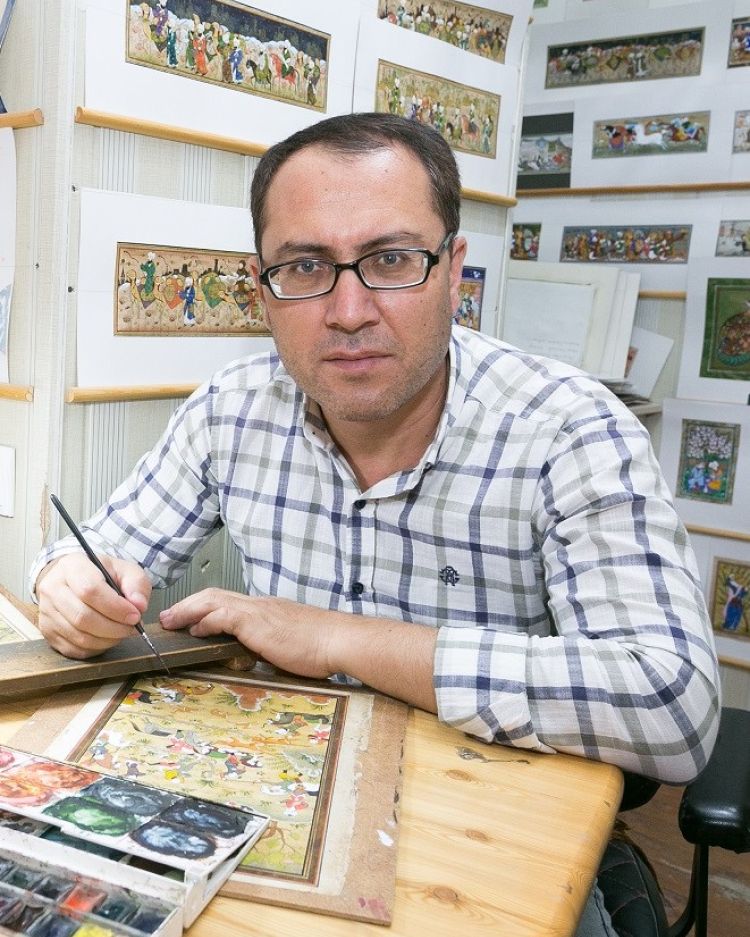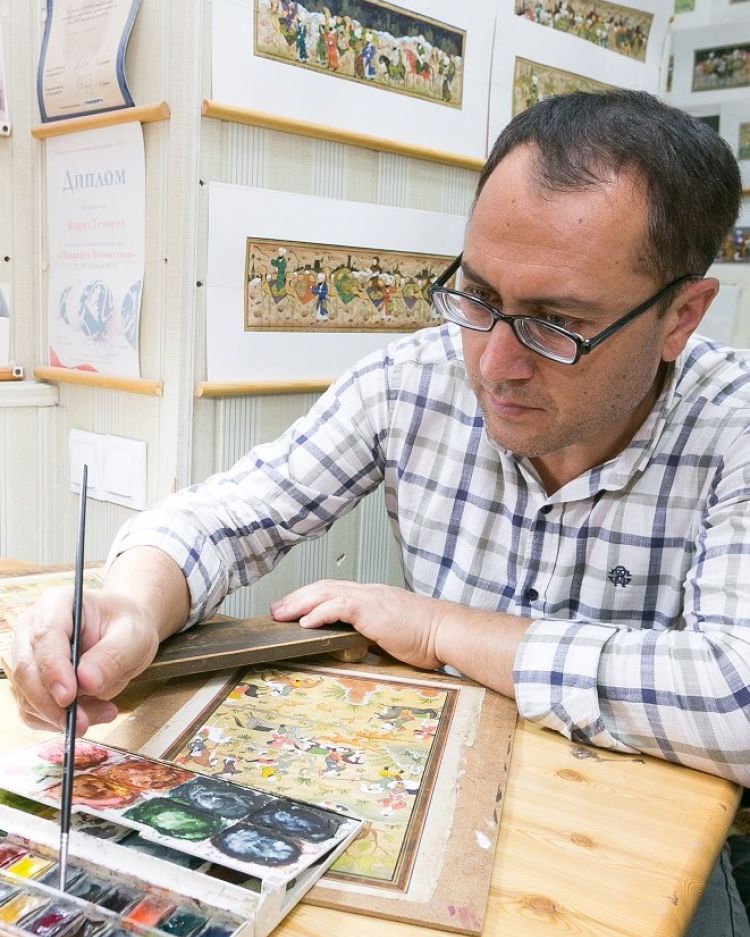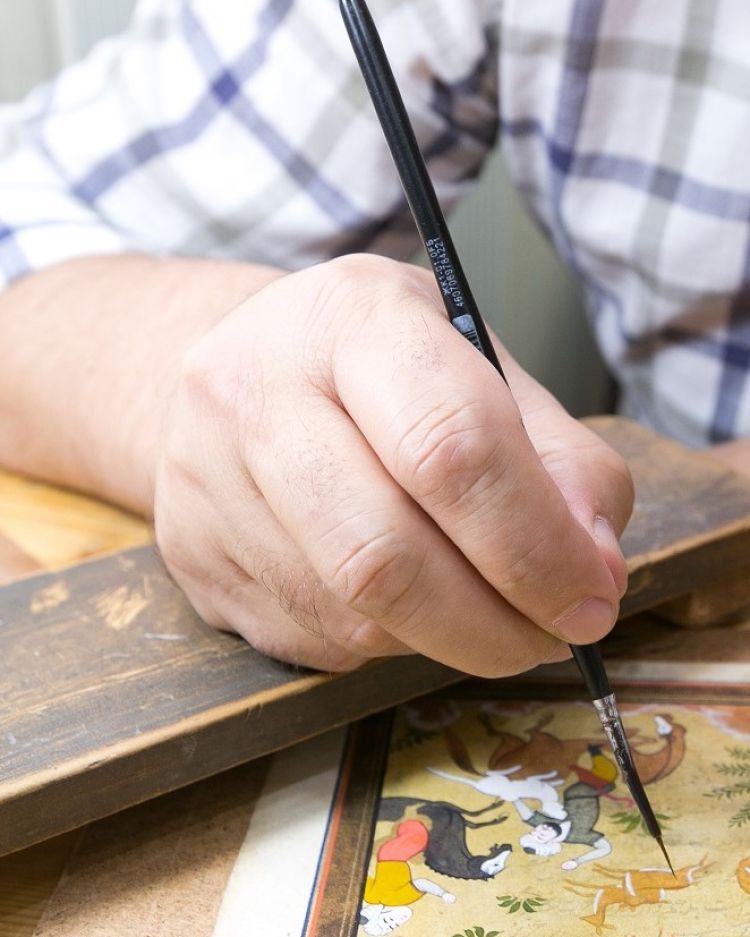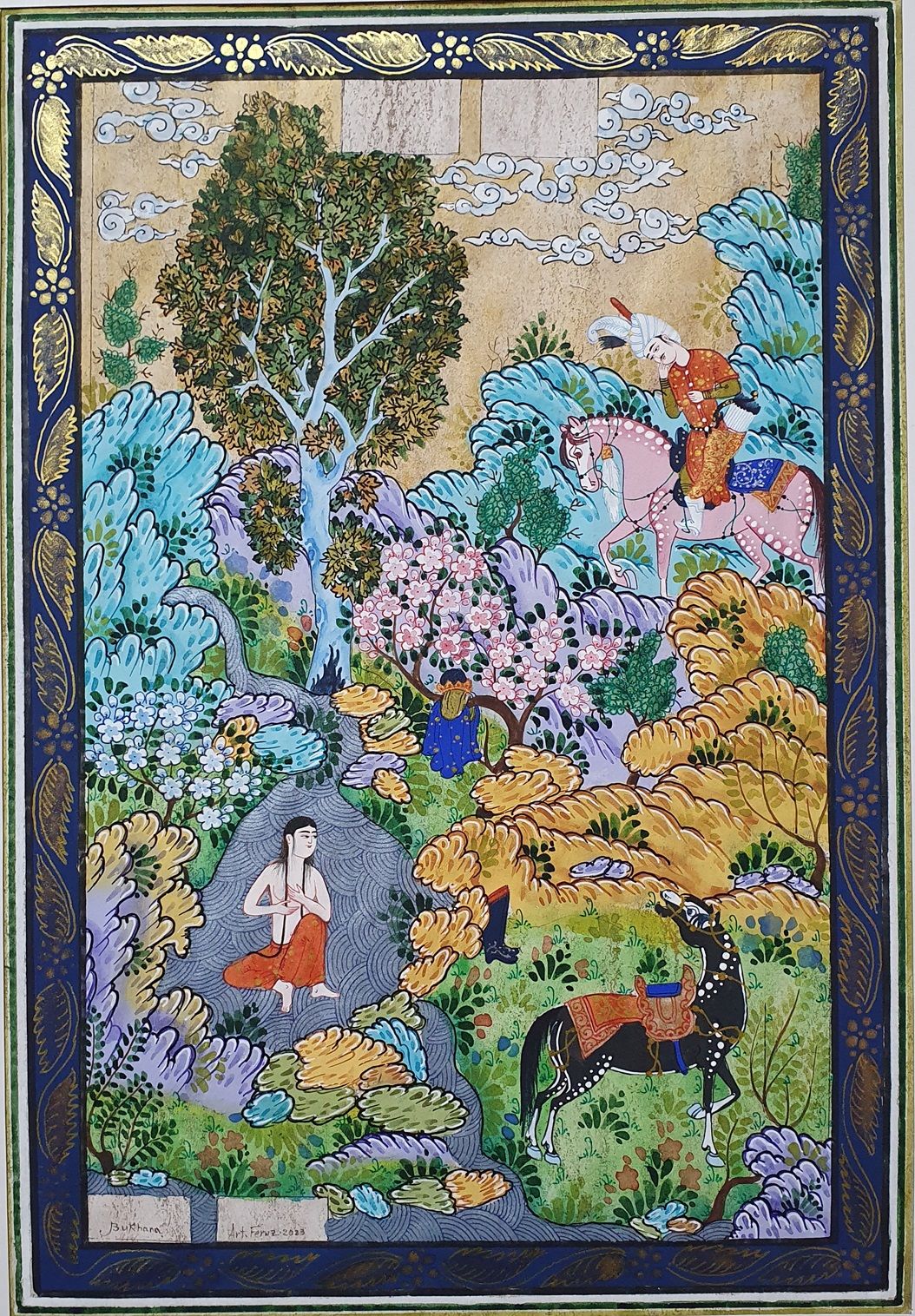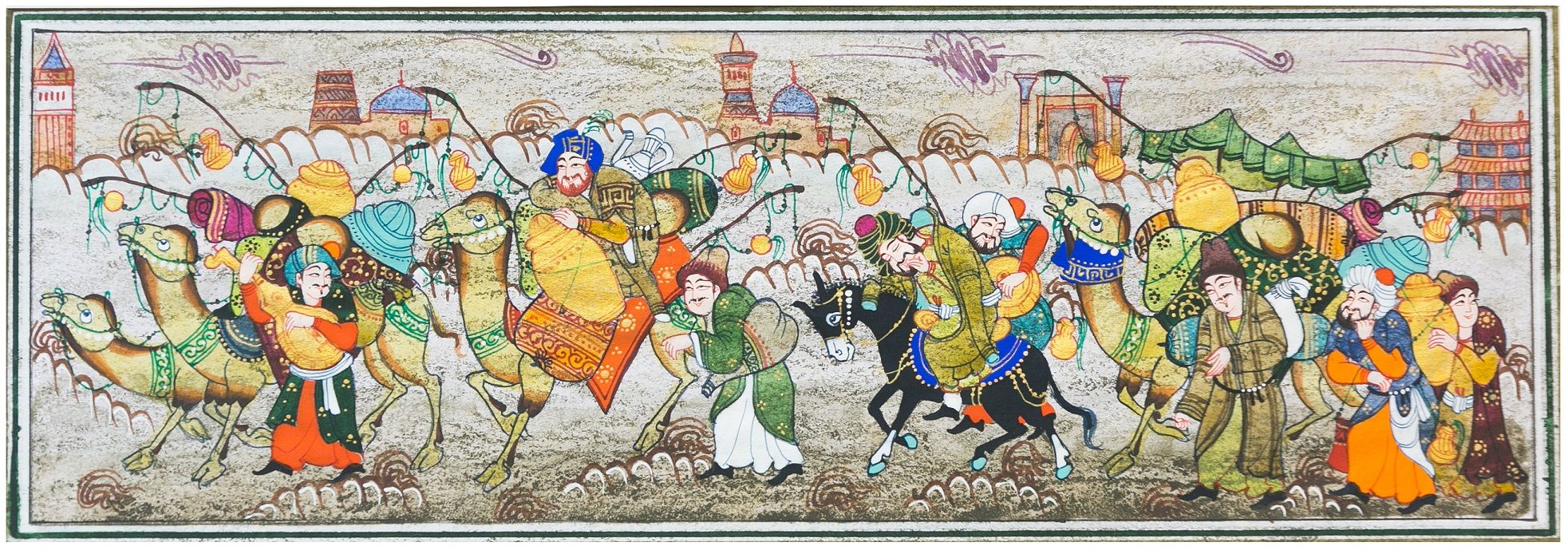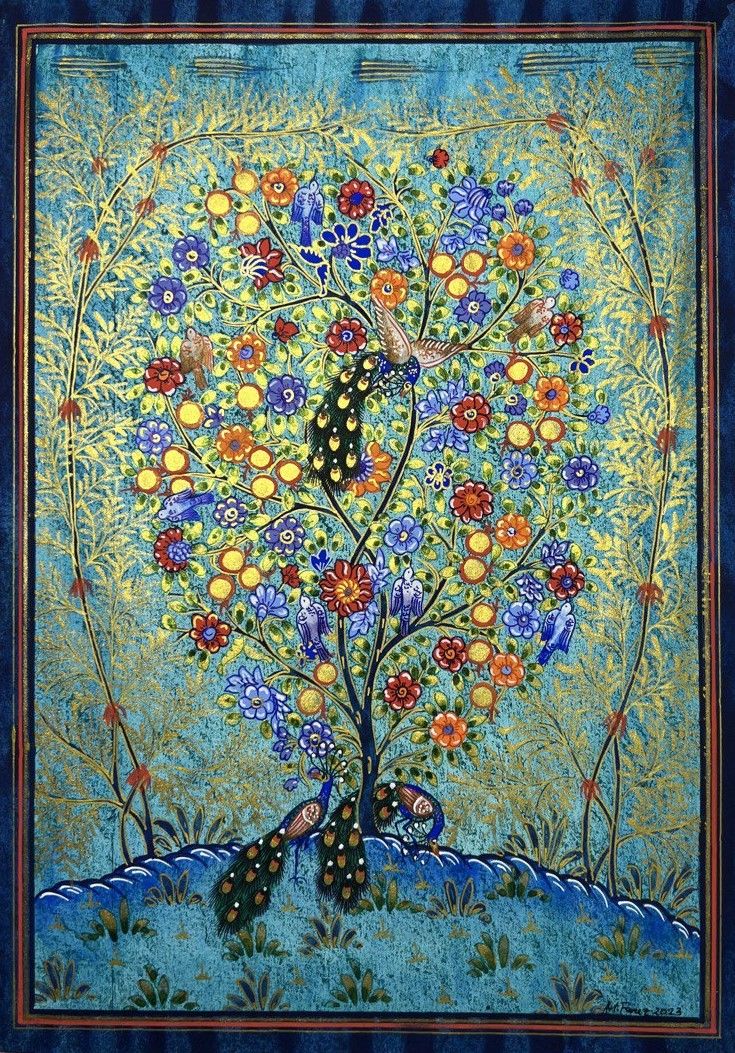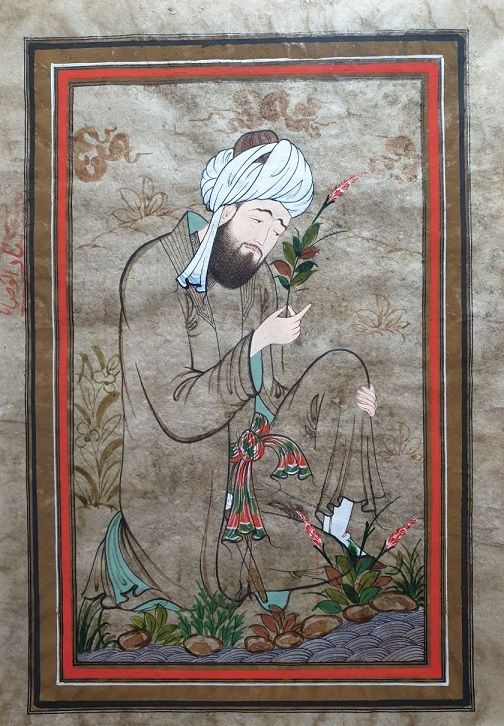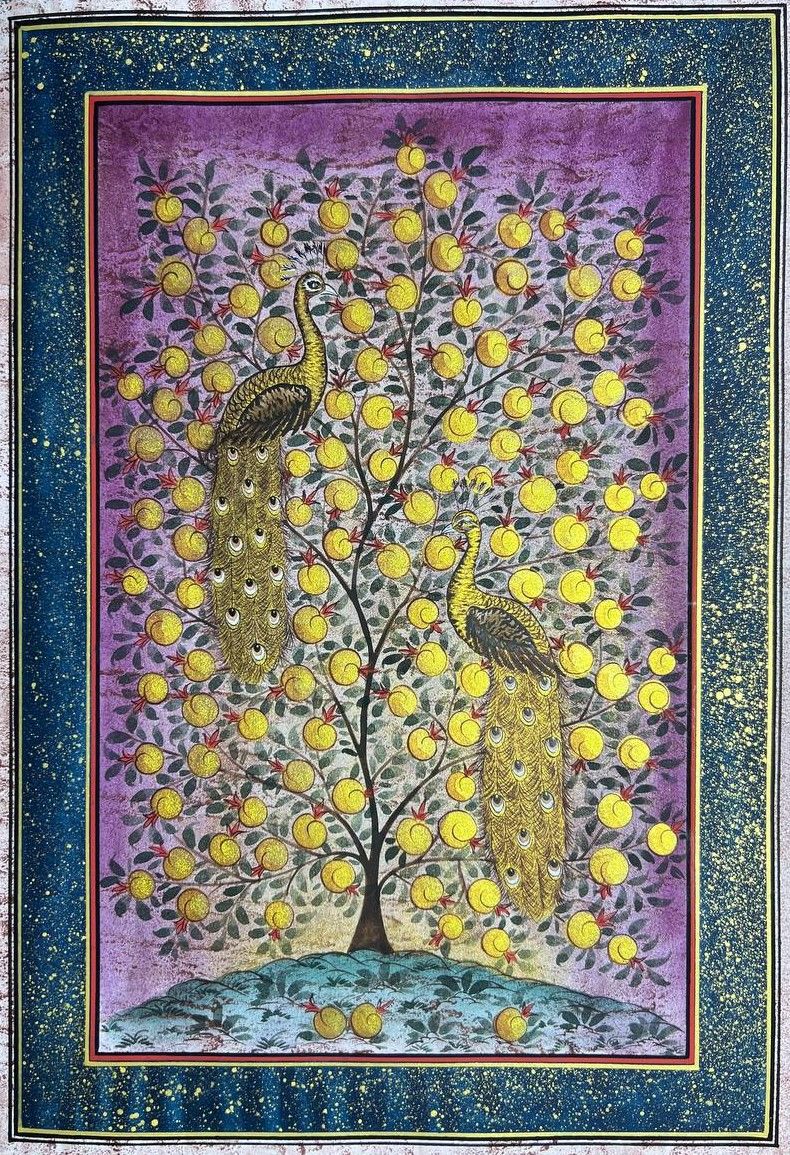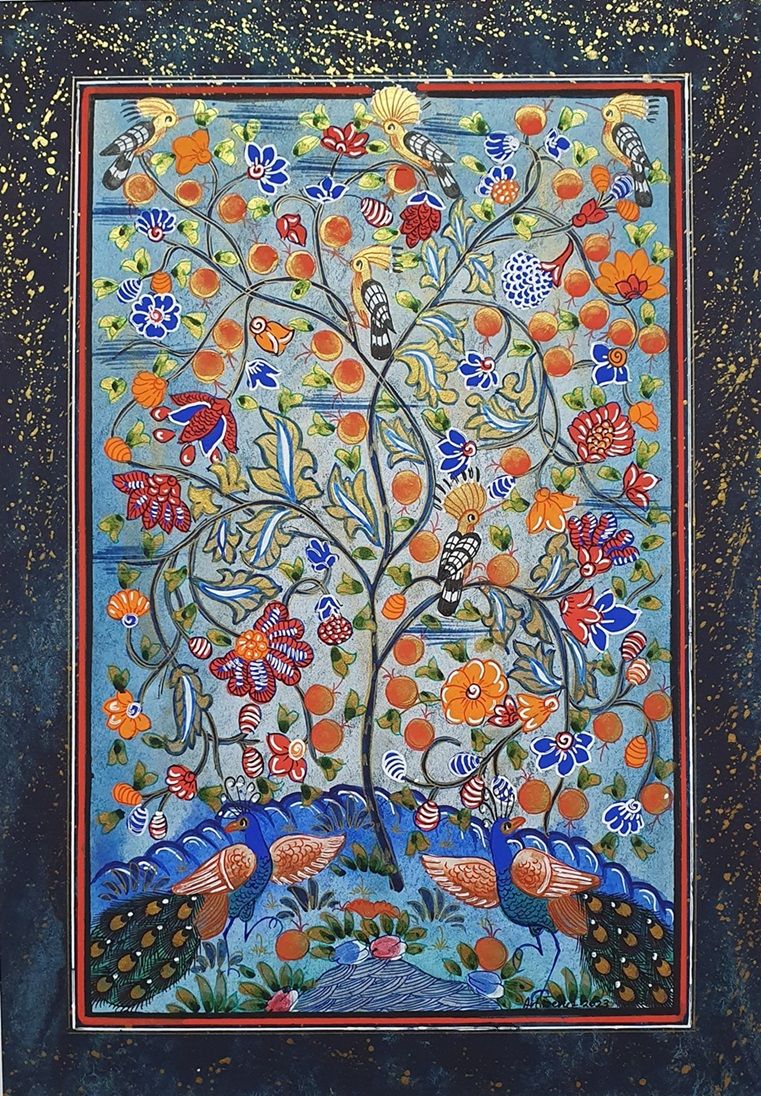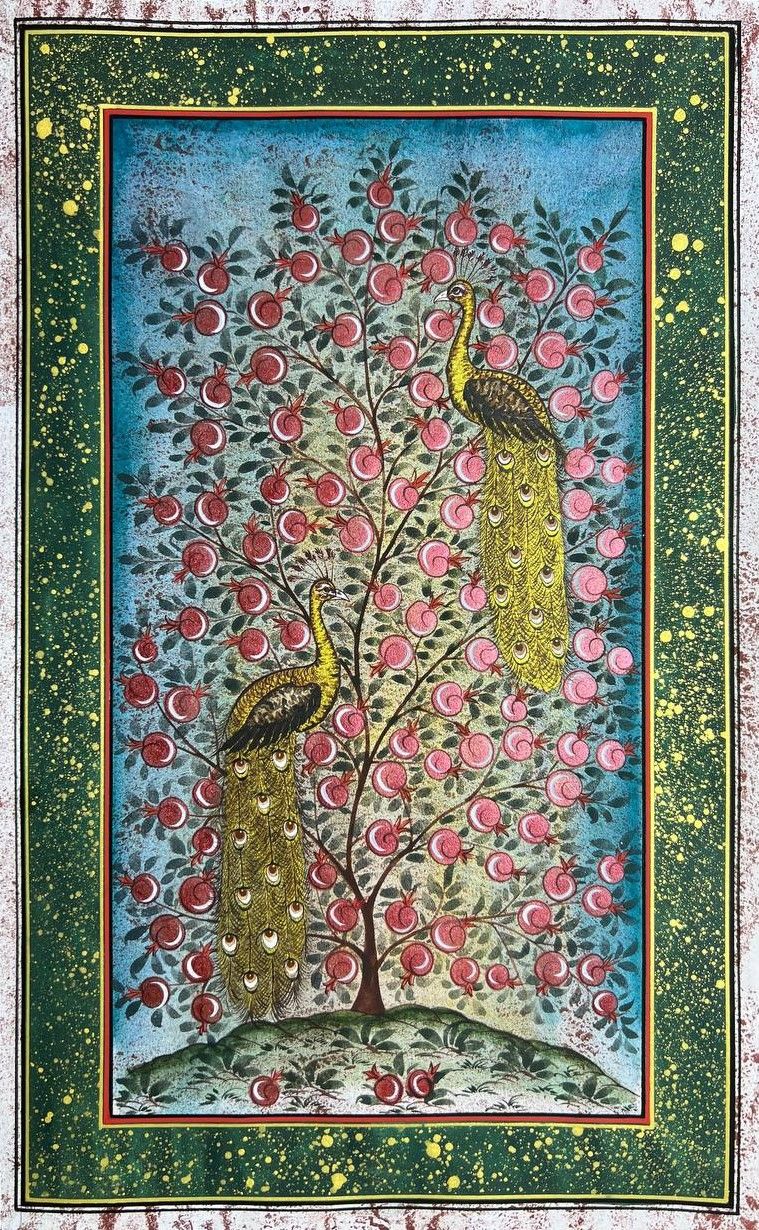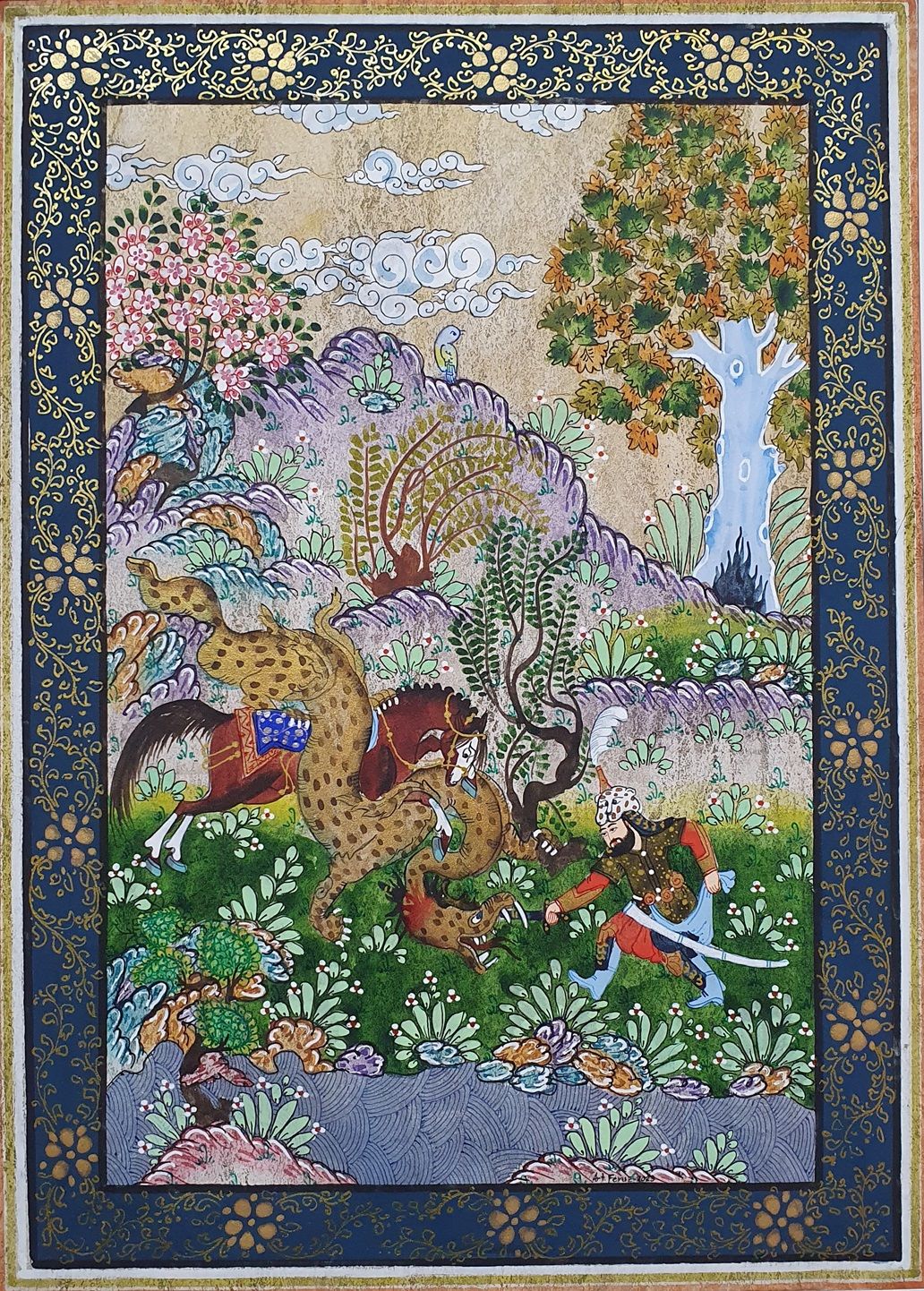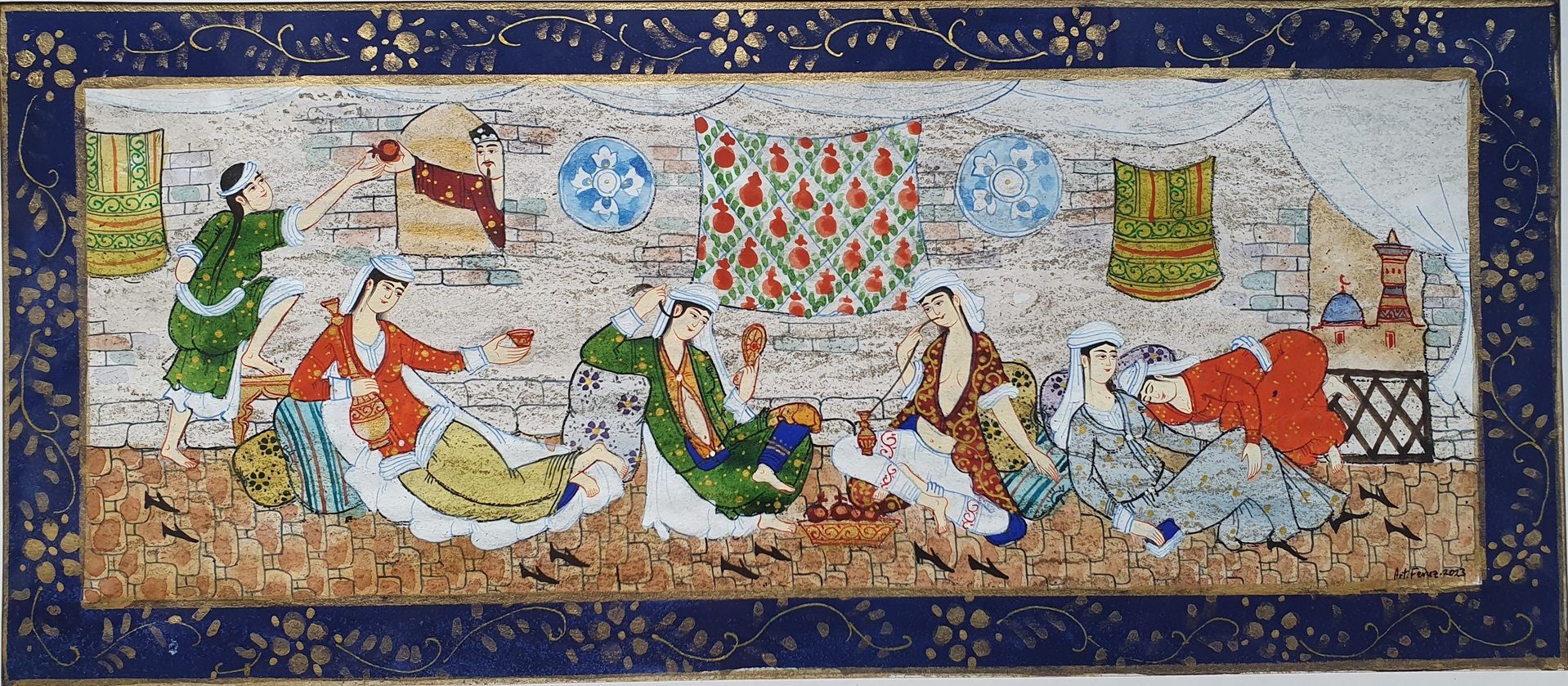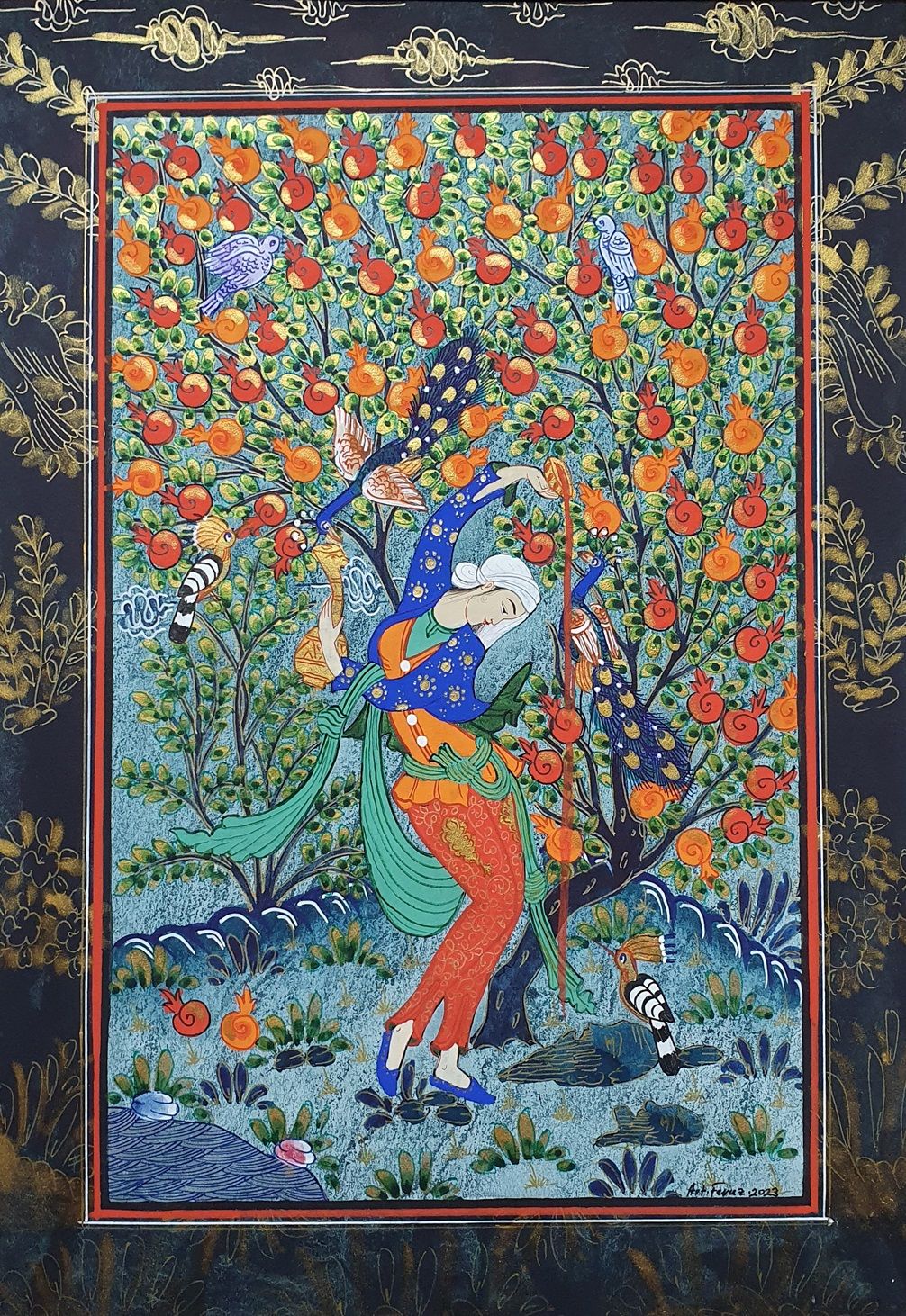Feruz Temirov was born in Bukhara, one of the ancient cities of Uzbekistan. Bukhara is famous for its ancient monuments, for great scientists and scholars and for artisans. Feruz is proud to live and work in this historical city, and is inspired by this environment.
The teaching of history, literature and music had a secure place in his family. Advised by his father Feruz applied for a place at the Department of Fine Arts, Faculty of Music and Fine Arts at Bukhara State University. He selected the art of miniature because of its connection with history and literature. After graduating he taught miniature for eight years at his faculty, where he also explored science and developed his practical skills.
He deepened his knowledge of important historians and writers: Firdausi and Omar Khayyam as well as the well-known Hadith scholar Ibn Sina (Avicenna). Feruz particularly admired the medieval miniature school from Iran, Herat and Bukhara. By copying from them and their contemporaries, he developed and refined his ability to draw trees, flowers, animals and buildings in minute detail.
In his current compositions, traditional motifs are enriched with new themes and images. His ambition is to inspire art lovers of today and hopefully future generations.
